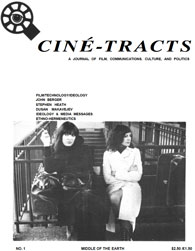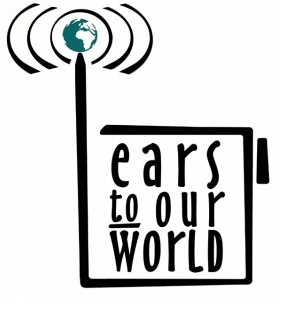This is the second part of my presentation at the [Refresh Conference in New Media](http://www.mediaarthistory.org) at the Banff Centre
So, the resistance to the appearance of different media forms may explain why media were renamed as new media. It may explain why someone like Lev Manovich relies on the trope of the cinema to explain the many complex levels that make up media landscapes and imageworlds. New in this instance is not only an escape from history, but also suggests that history is not important.
There is another important question here. What makes a medium specific discipline a discipline in any case? Is it the practice of the creators? Is it the fact that a heritage of production and circulation has built up enough to warrant analysis? I think not. Disciplines are produced through negotiation among a variety of players crossing the boundaries of industry, academia and the state. The term New Media has been built upon this detritus, and is a convenient way in which to develop a nomenclature that designates in a part for whole kind of way, that an entire field has been created. But, what is that field? Is it the sum total of the creative work within its rather fluid boundaries? Is it the sum total of the scholarly work that has been published? Is it the existence of a major journal that both celebrates and promotes not only its own existence but also the discipline itself?
These issues of boundary making are generally driven by political as well as cultural considerations. They are often governed by curatorial priorities developed through institutions that have very specific stakes in what they are promoting. None of these activities per se may define or even explain the rise, fall and development of various disciplines. But, as a whole, once in place, disciplines close their doors both as a defensive measure, but also to preserve the history of the struggle to come into being.
I am not suggesting by any means that things have not changed. I am not saying that digital media are simply extensions of existing forms of expression. I am saying that the struggle to define the field or discipline of media studies has always been an ongoing characteristic of both artistic and scholarly work in media. The permanence of this quasi existential crisis interests me. For the most part, for example, media studies ran into a wall when cultural studies appeared as an extension of English Departments, and when Communication Studies grew into an important discipline in its own right in the late 1950’s. Why? Suddenly, everyone was studying the media, commenting about popular culture, appropriating (mushing and mixing) intellectual traditions in a variety of different and often anarchic ways. But, somehow, the discipline as such grew into further and further levels of crisis. Which intellectual model works best? Does one use structural or post-structural modes of analysis? How can we factor in the linguistic, semiotic and ethnographic elements, and also bring in the contextual, political components? So, this is where I return to vantage point.
Juxtapose the following: The film, The Polar Express by Robert Zemeckis, which bridges the gap between digital worlds and the human body and tries to humanize an entirely artificial world; The American election of 2004 which relied on the Internet both for information and misinformation; the spectacular growth of web sites, like Friendster.com, which extend the way humans interact, communicate and develop relationships; the growth of Blogs, which have pushed publishing from the corporate world to the individual; the growing importance of search engines and popular discussions of how to engage with a sea of information; and finally, the spectacular growth of games, game consoles and on-line gaming.
Together, these and many other elements constitute image-worlds, which like a sheath cover the planet, allowing and encouraging workers in India to become office employees of large companies in the West and Chinese workers to produce goods and manage inventories on an unimaginable scale. These image-worlds operate at micro and macro levels. They are all encompassing, a bath of sounds and pictures immersing users in the manipulation of information both for exchange and as tools of power.
Picture these image-worlds as millions of intersecting concentric circles built in pyramidal style, shaped into forms that turn metal into messages and machines into devices that operate at the nano-level. Then imagine using a cell phone/PDA to call up some information that locates humans on a particular street as was done during the crisis in Louisiana and you have processes that are difficult to understand let alone see without a clear and specific choice of vantage point.
Can I stand, so to speak above the fray? How do I escape from this process long enough to be able to look back or ahead? Does Google represent the vantage point? Since historical analysis is by its very nature retrospective and since time is at best an arbitrary metaphor for continua, am I left with a series of fragments, most of which splay off in different directions? It is an irony that the thrust of this conference has been so archeological, trying to pick up the pieces, show what has been missed, connections that have not been made, as if retrospection is suddenly adequate irrespective of politics, conflict and ethics. Most interesting from my point of view is the use of the cognitive and neurosciences, dominated as they are by positivism and empiricism. Even more to the point, and to give you a sense of how important vantage points are, take the best example of all, the computer sciences which until very recently had transformed subjectivity into that insidious term user and for whom the cybernetic dream of linking input and output has determined the shape and form of most computer programs.
The digital age or perhaps better put, the algorithmic age, makes these issues all the more urgent because if the fundamental tropes for human subjectivity can so easily be reduced to terms like user, then not to understand the origins of the research in engineering that went into the trope pose many dangers. Tor Norretranders brilliant book, The User Illusion: Cutting Consciousness Down to Size (1998) investigates this problem in great depth and it is clear to me that richer paradigms of computer/human interaction are needed if we are to move beyond the limitations of mechanical modes of thinking about digital technologies and their impact on human consciousness. Yet, “ user is also an outgrowth of devalued models of subjectivity within media studies itself, a confluence of the media’s own evaluation of its viewers (ie the couch potato metaphor) as well as the challenge of studying viewing itself. This is perhaps the greatest irony of the ebb and flow of analysis in media studies. At times, particularly in the early to mid-seventies with the advent and growth of feminism, subjectivity became a site of contestation with a variety of methods from psychoanalysis to sociology to linguistics used as avenues into analysis, criticism and interpretation. All of that heterogeneity is now built into the analysis of new media with varying degrees of success and often with no reference to the historical origins of the intellectual models in use. Subjectivity remains a site of contestation as a concept, explanation and framework for understanding what humans do with the technologies and objects they use.
The conflation of user with experience, the reduction of subjectivity to action and reaction, is only possible if theory and analysis put to the side the far more complex side of human thought and that is the imagination. Digital experiences are highly mediated by technology but imagination, fantasy and daydreams increase the levels of complexity and add many more levels of mediation to the rich interrelationships that humans have with their cultures. All of these levels need to be disentangled if a variety of vantage points are to be constructed. Perhaps then, media studies can begin to make some claims about a paradigm shift of enough strength to warrant the use of the term new…..
 Sunday, July 9, 2006 at 10:36AM
Sunday, July 9, 2006 at 10:36AM 



